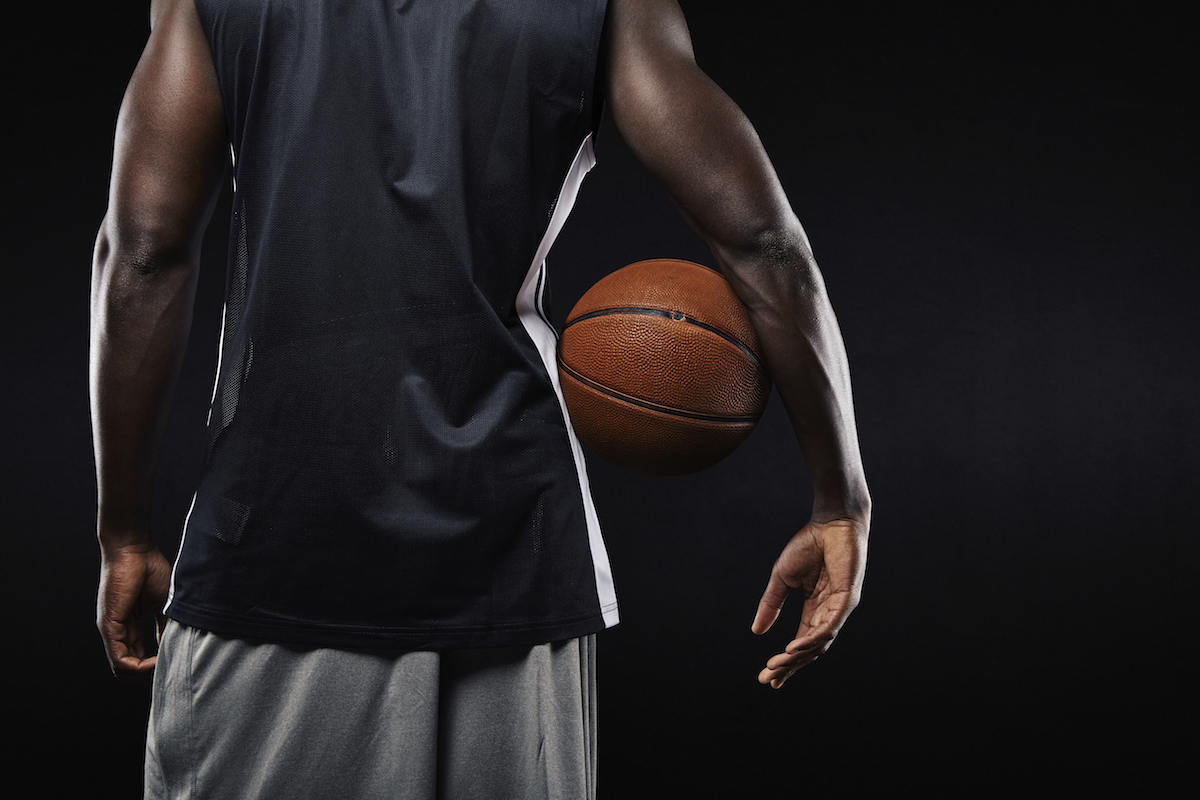Recently I had a post reviewing an article by McAllister et al (2014) looking at the effectiveness of various hamstring exercises. This is actually a convenient time to look back at the last few years of research and to look at what we “know.” This is important because we never have enough time to train our athletes so we need to focus on what is most important for their health and their performance. This post will look at the hamstrings and ACL injuries, the hamstrings and sprinting-related injuries, as well as training the hamstrings.
ACL Injuries:
With regards to the ACL, in theory the hamstring can have several functions. These include taking up some of the load, landing mechanics, and resisting tibial translation. Recent research has focused on female athletes due to their predisposition for noncontact ACL injuries. The thinking in this situation is that hamstring strength is ultimately the culprit.
Wild et al (2013) studied 10-13 year old girls. They tested the subjects on their eccentric and concentric isokinetic hamstring and quadriceps strength. The authors then divided the subjects into a weak hamstring group and a strong hamstring group (the strong hamstring group had a hamstring torque almost 67% higher than the weak group), then had the subjects perform 5-7 horizontal leaps (jump off two feet, land on one) while evaluating kinematics, ground reaction forces, and EMG activity. The authors found that the weaker group had greater peak ACL force, more knee abduction, less knee external rotation, and more hip external rotation at the time of peak ground reaction forces.
Ford et al (2011) studied high school volleyball players and had them perform drop jumps from heights of 15cm, 30cm, and 45cm to a force platform. They found that as the height increased, hip and knee flexion angles decreased (i.e. shallower landings) while the quadriceps activity increased as the height increased.
These are two studies with really small, limited populations. We don’t know if any of the subjects eventually suffered an ACL injury. And we’ll never be able to perform a study that demonstrates cause and effect. However, there are hints that the hamstrings and associated landing mechanics may have a role in noncontact ACL injuries.
Sprinting-related injuries:
Athletes who sprint suffer hamstring strains. Not only is this the kind of injury that can shut down an athlete’s ability to sprint, land, and change directions, but it is also one with a high degree of reoccurrence. In fact, according to Opar et al (2012), hamstring strain injuries account for 12-26% of all sports injuries with at least a quarter of them being re-injuries.
Kumakazi et al (2012) provided a good foundational study to understand what’s going on during sprinting-related hamstring injuries. They studied both cadavers as well as live subjects. What they found is that the hamstrings generate the most torque when the knee joint is almost fully extended (i.e. when the hamstrings are stretched). This is important to understand because the long head of the biceps femoris and the semimembranosus both have shorter muscle fibers compared to their length than the short head of the biceps femoris and the semitendinosus. In other words, when the knee is extended the long head of the biceps femoris and the semimembranosus can be stretched excessively. This hints that it is the driving the “driving the foot to the ground” phase that may be the culprit when sprinting.
Opar et al (2012) note that hamstring strain injuries occur during the “terminal swing” in running. This is the period of time in which the hip is flexing, the knee is extending, and the hamstrings are keeping the knee from hyperextending. In other words, the driving the foot to the ground phase.
In contrast, Zvijac et al (2013) published a study looking at National Football Players. The authors tested the athletes at the NFL combine to determine their isokinetic quadriceps and hamstrings strength. The authors then followed the athletes during the season. 21% of the athletes suffered a hamstring injury during the season. There was no difference between the hamstring-to-quadriceps ratio between the injured leg and the uninjured leg. In addition, there was no difference between the hamstring-to-quadriceps ratio between injured players and uninjured players.
The Zvijac study suffered from one shortcoming, it only examined concentric strength. In their discussion, the authors bring up the fact that concentric strength may not be what is important, eccentric strength may be the smoking gun.
Training the hamstrings:
So what can we do to train the hamstrings? All of the muscles in the group are important for different reasons. The semitendinosus resists tibial translation, so it may have a role in ACL injury prevention. The semimembranosus and biceps femoris are important due to preventing hamstring strains during sprinting.
Clearly there are exercises that target the hamstrings. McAllister et al (2014) showed that when comparing the Romanian deadlift, good morning, glute ham raise, and lying leg curl the Romanian deadlift has the greatest biceps femoris activation during both the concentric and eccentric phases of the exercise. On the other hand, the Romanian deadlift was most effective at eccentric activation of the semitendinosus, but the glute ham raise was most effective at the concentric activation.
One exercise that can be overlooked is the Nordic hamstring exercise. Iga et al (2012) examined the activation of the hamstrings while performing this exercise and looked at the impact that a four week training program using this exercise has. They found that, during the movement, the hamstrings are most active in the middle of the movement, least active at the beginning, and in-between at the end. What is interesting is that after four weeks of training, the knee angle at which hamstring peak torque occurred changed so that the hamstrings were able to exert more force at longer lengths. In other words, if we’re interested in developing eccentric strength then this is going to be an important exercise to include in a conditioning program.
Now, when considering exercise selection it is important to remember exercises like squats and leg presses. In a classic study, Escamilla et al (2001) found that the squat was more effective at recruiting the hamstrings than the leg press. Not only that, but the wide stance squat results in greater hamstring activity than the narrow stance squat. During the squat, the hamstrings are more active during the ascent with activity peaking at a knee angle of about 60 degrees (Escamilla et al 2001). Remember, the hamstrings extend the hip as well as flex the knee.
So, with all the above, some take home messages for the busy strength and conditioning practitioner:
• It is by no means definitive, but there are hints that the hamstrings may have a role in noncontact ACL injuries.
• Strengthening the hip extension role of the hamstrings may be important for preventing sprinting-related injuries.
• A variety of hamstring exercises focused around the Romanian deadlift, Nordic hamstring exercise, and the glute ham raise are going to be important in the weightroom.
• Squatting is important. They may not enjoy it, but most athletes are going to need to squat!
References:
I have written reviews of many of these articles. When that is in the case, the link to the review follows the citation in parenthesis.
Escamilla, R.F., Fleisig, G.S., Zheng, N., Lander, J.E., Barrentine, S.W., Andrews, J.R., Bergemann, B.W., and Moorman III, C.T. (2001). Effects of technique variations on knee biomechanics during the squat and leg press. Medicine and Science in Sports and Exercise, 33(9), 1552-1566.
Ford, K.R., Myer, G.D., Schmitt, L.C., Uhl, T.L., and Hewett, T.E. (2011). Preferential quadriceps activation in female athletes with incremental increases in landing intensity. Journal of Applied Biomechanics, 27, 215-222. (http://wp.me/pZf7K-5V ).
Iga, J., Fruer, C.S., Deighan, M., Croix, M.D.S., and James, D.V.B. (2012). “Nordic” hamstrings exercise – engagement characteristics and training response. International Journal of Sports Medicine, 33(12): 1000-1004. (http://wp.me/p1XfMm-6Y )
Kumazaki, T., Ehara, Y., and Sakai, T. (2012). Anatomy and physiology of hamstring injury. International Journal of Sports Medicine, 33(12): 950-954. (http://wp.me/p1XfMm-6W )
McAllister, M.J., Hammond, K.G., Schilling, B.K., Ferreria, L.C., Reed, J.P., and Weiss, L.W. (2014). Muscle activation during various hamstring exercises. Journal of Strength and Conditioning Research, 28(6): 1573-1580. (http://wp.me/p1XfMm-cE )
Opar, D.A., Williams, M.D., and Shield, A.J. (2012). Hamstring strain injuries: Factors that lead to injury and re-injury. Sports Medicine, 42(3): 209-226. (http://wp.me/p1XfMm-3Q )
Wild, C.Y., Steele, J.R., and Munro, B.J. (2013). Insufficient hamstring strength compromises landing technique in adolescent girls. Medicine and Science in Sports and Exercise, 45(3): 497-505. ( http://wp.me/p1XfMm-7Q )
Zvijac, J.E., Toriscelli, T.A., Merrick, S., and Kiebzak, G.M. (2013). Isokinetic concentric quadriceps and hamstring strength variables from the NFL scouting combine are not predictive of hamstring injury in first-year professional football players. American Journal of Sports Medicine, 41: 1511-1518. (http://wp.me/p1XfMm-8L )



